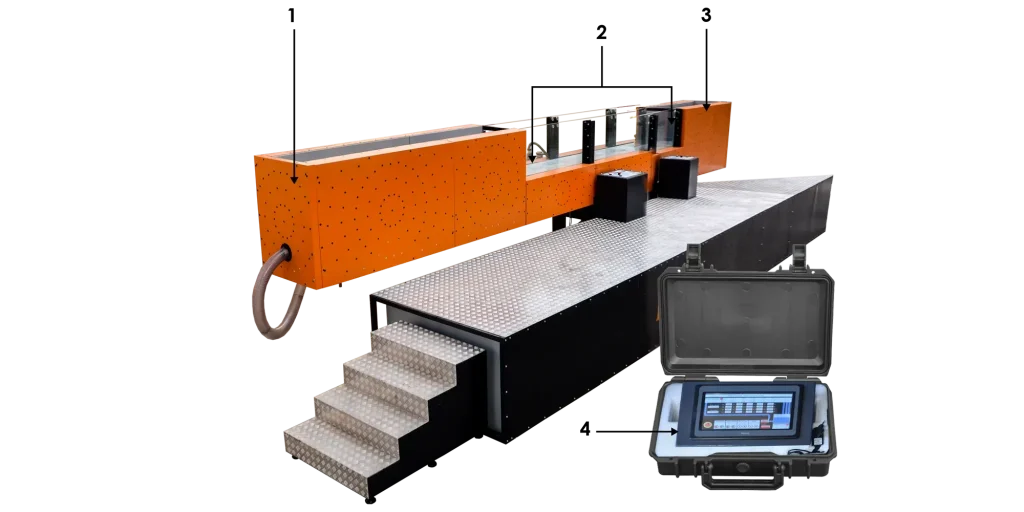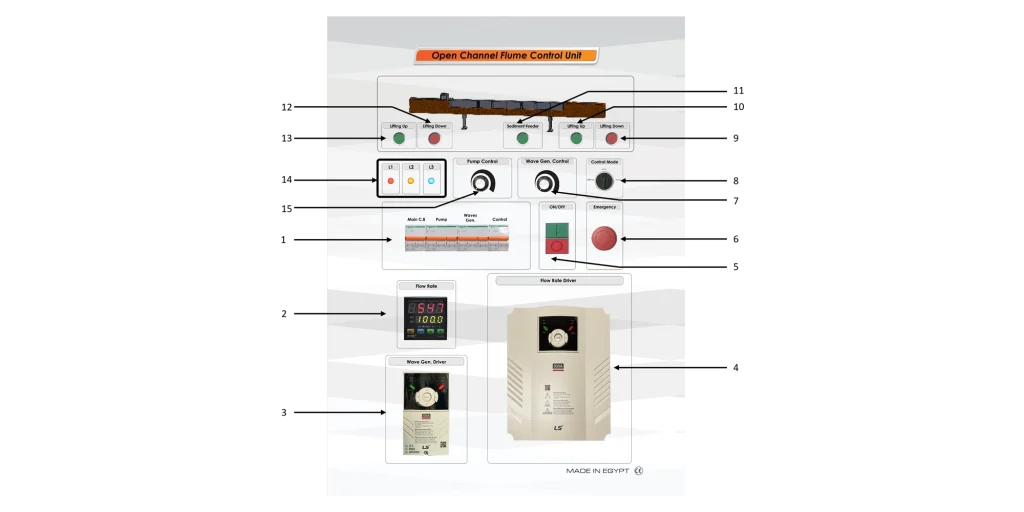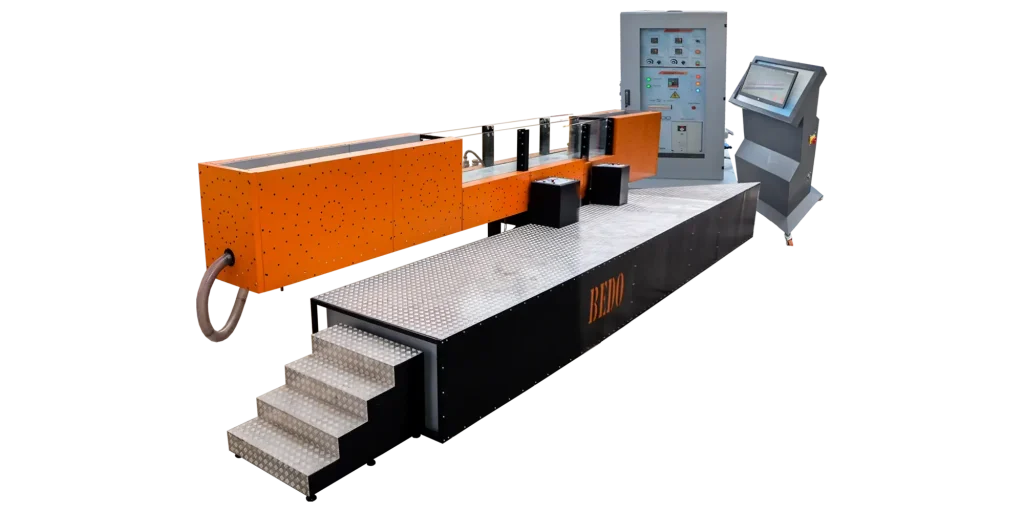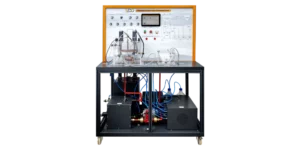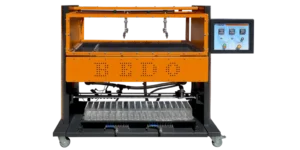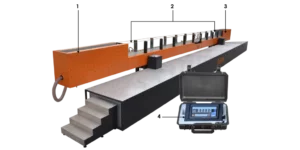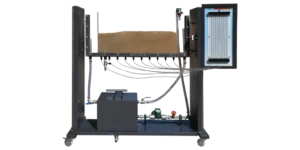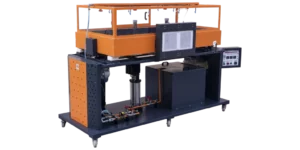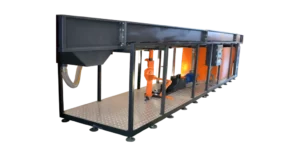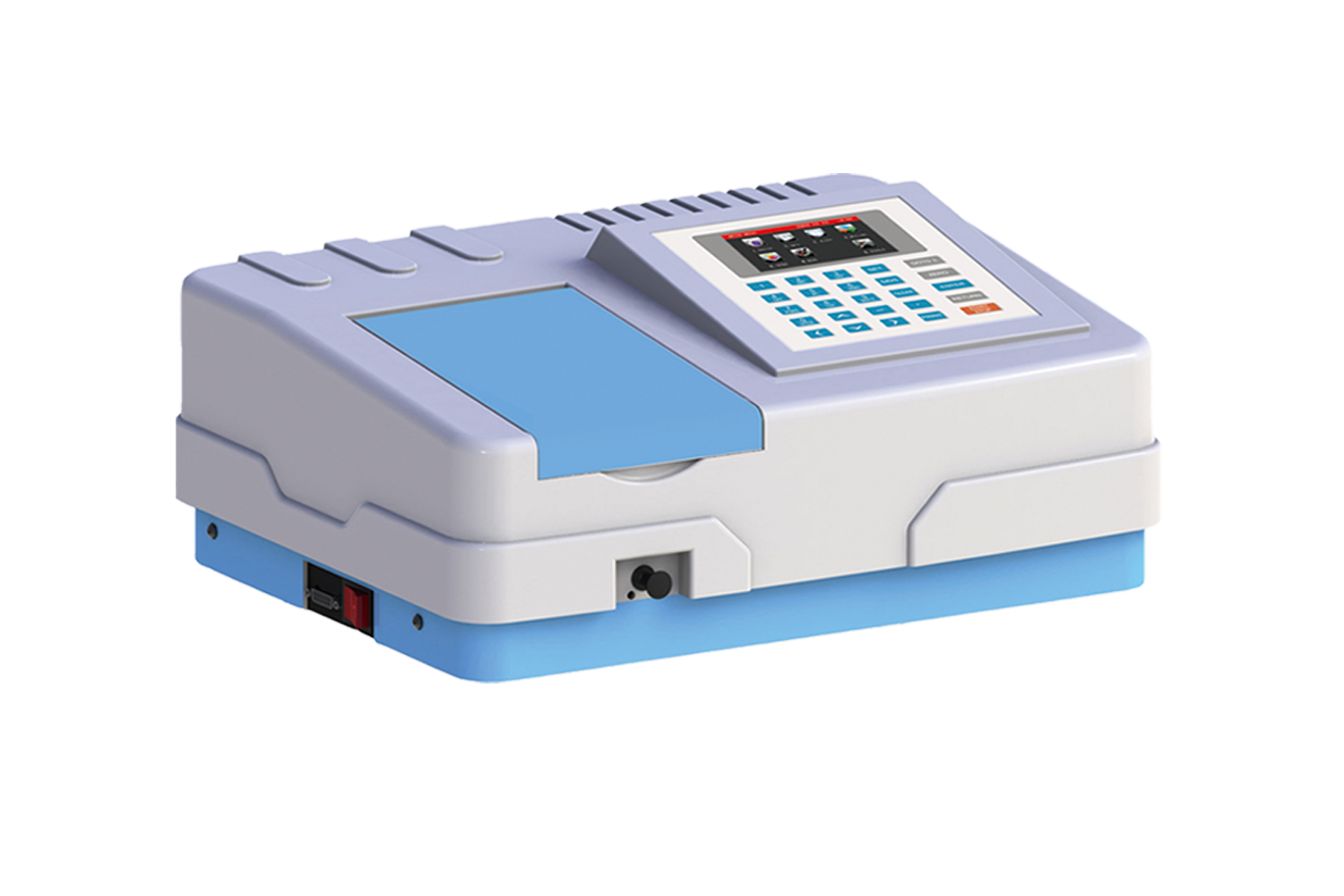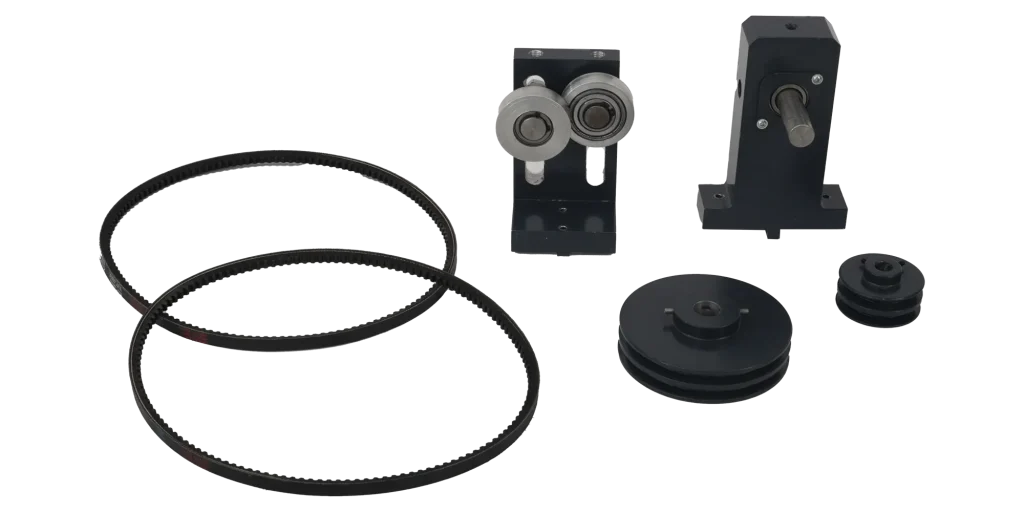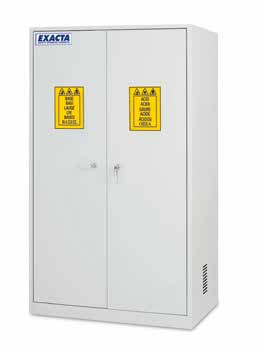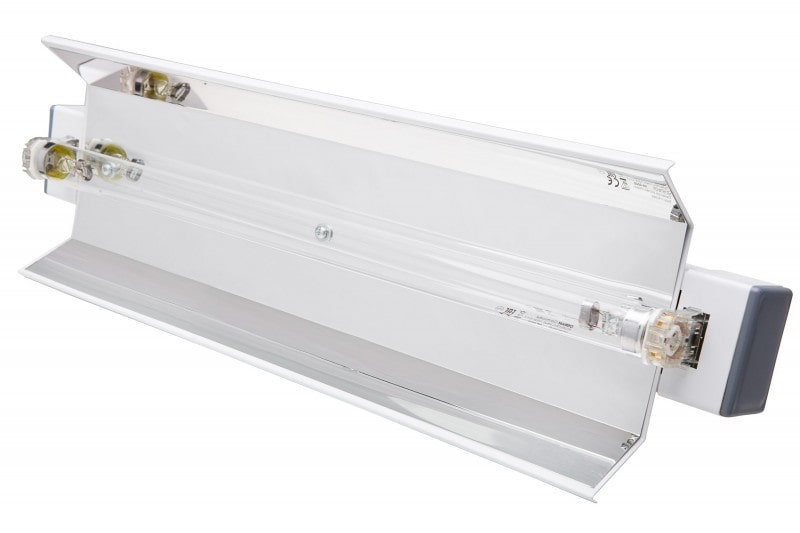Opis
Symulator kanału otwartego (HI101) został zaprojektowany w celu zilustrowania zasad mechaniki płynów w zastosowaniu do przepływu w kanale otwartym. Ściany boczne sekcji eksperymentalnej są wykonane z hartowanego szkła, aby zapewnić całkowitą widoczność przepływu i eksperymentów.
1. Wyłączniki 2. Natężenie przepływu 3. Sterownik generatora fal 4. Sterownik natężenia przepływu 5. Włącznik/wyłącznik sterowania 6. Wyłącznik awaryjny. 7. Sterowanie prędkością generatora fal 8. Tryb sterowania 9. Podnośniki w dół 10. Podnośniki w górę 11. Podajnik osadów 12. Podnośniki w dół 13. Podnośniki w górę 14. Diody LED wskazujące działanie jednostki sterującej 15. Pokrętło regulacji prędkości pompy
